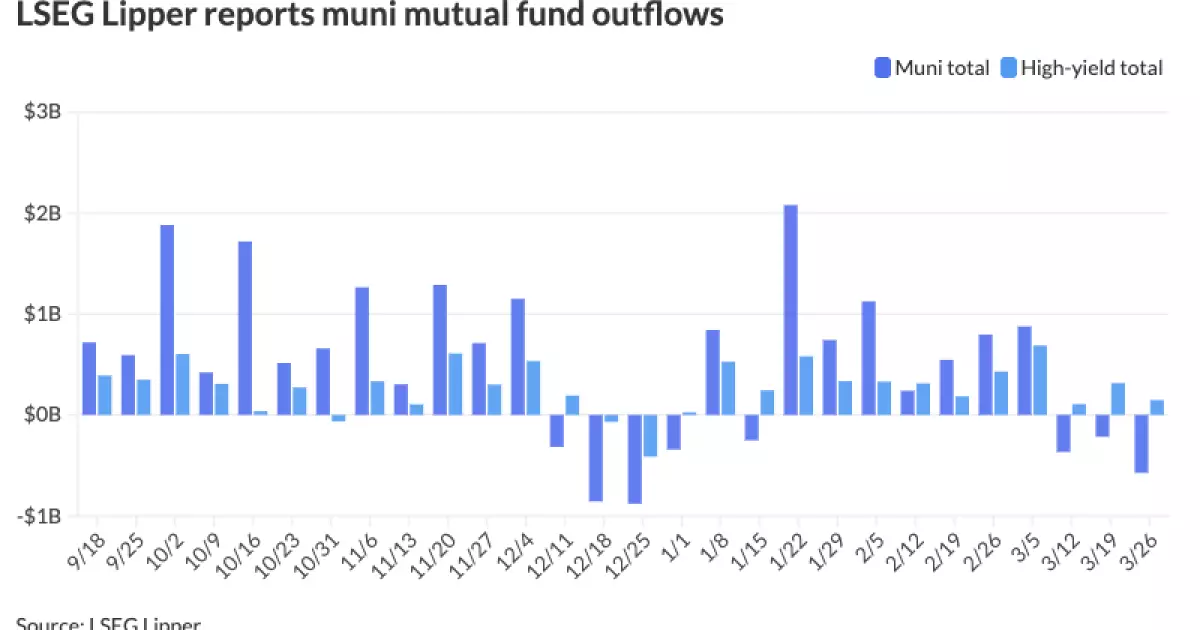The municipal bond market is experiencing profound turbulence, defying previous assumptions that stability was a hallmark of this sector. It’s alarming to witness interest rates rise steadily and consistently throughout March, revealing a fundamental weakness that investors had underestimated. This isn’t merely a financial phenomenon but a reflection of a broader economic discontent, exacerbated by weak fundamentals and pervasive uncertainty. For those relying on these bonds as a safe investment, the increased yields might initially appear beneficial. However, this apparent advantage masks larger issues lurking just beneath the surface.
Understanding the Evolving Yield Curves
Just consider the implications of the current yield structures. A glance at the two-year municipal to U.S. Treasury (UST) ratios—which were reported at 69%, 71%, and 91% for various durations—reveals a drastic change in the market sentiment. Such numbers evoke anxiety, indicating a significant departure from the attractive returns that have historically lured investors. The yield curve’s ascent suggests not just a market correction but a potential crisis in investor confidence. Financial managers like Kim Olsan of NewSquare Capital pointed out this precarious situation, highlighting that a host of adverse factors are likely to persist, casting a long shadow over the market.
This climate of hesitation makes it difficult for investors to find refuge. With two-year municipal yields climbing to 3.00%, which is regrettably higher than where 15-year municipal paper traded at the end of Q3 2023, the search for relative value has become a treacherous endeavor. The crux of the problem lies in the inability of many to grasp the gravity of these changes and adequately adjust their portfolios.
Investor Sentiment Wavers Amid Tumultuous Conditions
Compounding this dilemma is the visible exodus of capital from municipal bond mutual funds, which has worsened over the past few weeks. A staggering $573.3 million was withdrawn by investors in the week ending Wednesday, following a previous week of $216.4 million in outflows. This trend is particularly concerning, as it signifies a broader discontent and, quite frankly, a fear of what lies ahead. When institutional investors make a flight from stability, it raises red flags about the integrity of this market segment.
On the contrary, high-yield funds did see a minor influx of $147.7 million over the same period, suggesting that some investors are transitioning toward riskier, more volatile assets. This reflects an unsettling consciousness that high-quality investments might no longer yield satisfactory returns as market conditions deteriorate. Their retreat from traditionally safe havens like municipal bonds hints at a systemic issue, where even the most cautious investors are forced to adapt.
Institutional Responses and Market Adjustments
Interestingly, while the chaos has unsettled many, it has also presented a new realm of opportunities for canny value-seekers. Reports indicate that yields over 4.00% are now commonplace actually. Some exceptional credits are even trading above 5.00%. Olsan suggested that significant investments in infrastructure bonds with high coupon structures are gaining traction, allowing astute investors to maximize yields despite the unfavorable climate. However, this notion raises further questions about sustainability. Is it prudent to chase these yields, or is such behavior merely inviting more risk into an already beleaguered market?
The ongoing shift in the primary market won’t be without challenges. For instance, multi-billion dollar projects in cities like Los Angeles continue to encounter hurdles stemming from rising yields, leading to increased borrowing costs. Get ready for higher taxes and potential cutbacks on essential services as municipalities scramble to keep up with their financial commitments.
The Struggle for Stability
As we assess the current state of the municipal bond landscape, it is evident that institutional investors must tread carefully. With modifications to the yield curve and omnipresent uncertainties, relying on traditional bonds for stability now requires a substantial reevaluation of risk tolerance. The bleak outlook, underscored by persistent challenges and growing operating costs, creates a climate of trepidation.
In this evolving investment environment, what becomes apparent is the necessity for strategic asset management and diversification. Investors should be aware that municipal bonds may not act as the traditional safe haven they’ve relied upon in the past, and safeguarding one’s portfolio demands vigilance and foresight. To navigate this tumultuous landscape effectively, one must adopt a proactive approach, balancing between risk appetite and the imperatives of prospective returns.
In an era where previous financial certainties are rapidly dissolving, the time to rethink your investment strategy could very well be now.


Leave a Reply